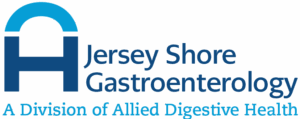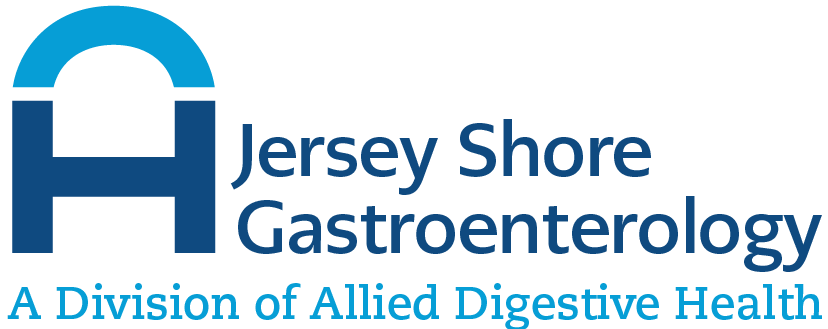Fatty Liver Diagnosis
Fatty liver disease is quite common and affects one in three adults and one in ten children in the United States. Quite simply, a fatty liver diagnosis means the liver is storing an abundance of fat. In many cases, patients aren’t aware they have fatty liver disease, and in many cases, there is no damage or significant harm to their liver. However, in some cases, a fatty liver diagnosis can lead to serious problems, such as liver failure or liver cancer. Read on to learn more about fatty liver disease, the different types of fatty liver disease, and available treatment options.
What Is Fatty Liver Disease?
It is normal to have extra fat in your liver, but when too much is stored, it can lead to serious health problems. Over time, too much fat can lead to scarring (cirrhosis), which can lead to liver failure. There are two types of fatty liver disease: nonalcoholic fatty liver disease (NAFLD) and alcoholic fatty liver disease (AFLD). NAFLD is much more common in the United States. Fatty liver disease is also known as hepatic steatosis.
The liver is the second-largest organ in the body, and its job is to filter out harmful things from the blood and help process nutrients. If there is too much fat, the liver becomes inflamed and cannot perform its job properly. Additionally, hepatic steatosis can lead to liver failure if it goes untreated.
Types of Fatty Liver Disease
There are several types of fatty liver disease, with nonalcoholic fatty liver disease being the most common. If you receive a fatty liver diagnosis, it will be one of these types:
- Nonalcoholic fatty liver disease (NAFLD). This disease occurs in people who are not heavy drinkers; excess fat simply builds up in the liver. Researchers and doctors do not know the exact cause of NAFLD. If you don’t drink and there is no inflammation, your fatty liver diagnosis will be that of NAFLD. However, there is another type of NAFLD, called nonalcoholic steatohepatitis (NASH).
- NASH. If your fatty liver diagnosis is NASH, this means there is inflammation present in the liver because of the buildup of too much fat. If NASH goes untreated, it could lead to liver fibrosis, which can progress to cirrhosis.
- Alcoholic fatty liver disease (AFLD). Over time, heavy drinking can damage the liver, and alcoholic fatty liver disease is the first stage of alcohol-related liver problems. Just as with NASH, if AFLD goes untreated (particularly if the patient is still drinking alcohol), alcoholic fatty liver disease can lead to liver fibrosis and cirrhosis. As cirrhosis (scarring) progresses, it can lead to complete liver failure and may be fatal.
When comparing NAFLD or NASH, the easiest way to remember is that NAFLD has no inflammation of the liver while NASH does indicate inflammation.
Another extremely rare type of fatty liver disease is acute fatty liver of pregnancy (AFLP). Medical professionals are unsure why this occurs, but AFLP typically appears in the third trimester and can be a serious complication for both mother and baby. If AFLP is suspected, consult your gastroenterologist or physician immediately.
What Are the Symptoms of Fatty Liver Disease?
Unfortunately, symptoms of fatty liver disease are rarely noticed until the disease has progressed, often to cirrhosis. Some symptoms may include:
- Jaundice (yellowing of the skin and eyes)
- Abdominal pain
- A feeling of being full
- Edema (swelling in the abdomen and legs)
- Nausea
- Unintended weight loss
- Weakness
- Confusion
- Unexplained fatigue
If you are experiencing several of these symptoms, you should consult your GI doctor as soon as possible for a fatty liver diagnosis and treatment.
What Causes Fatty Liver Disease?
The exact cause of NAFLD is not known, while AFLD is directly related to alcohol usage. However, some risk factors can contribute to the development of NAFLD:
- Metabolic syndrome
- Obesity
- Type 2 diabetes
- Insulin resistance
- High levels of triglycerides in the blood
- Pregnancy (AFLP)
- Hepatitis C
- Side effects from certain medications, such as methotrexate or amiodarone
- High cholesterol
- Sleep apnea
- Polycystic ovary syndrome (PCOS)
- Family history of liver disease
- Rare genetic conditions, such as Wilson disease
If you meet the criteria for one or more risk factors for NAFLD, you should talk to your doctor so they can perform diagnostic tests to determine if you have fatty liver disease.
Also, according to the National Institute of Diabetes and Digestive and Kidney Diseases, NAFLD occurs in all ethnicities but has a higher rate in those of Hispanic descent.
Alcoholic fatty liver disease, however, has one main risk factor: heavy drinking. The Centers for Disease Control and Prevention (CDC) define heavy drinking as 15 or more drinks per week for men, and 8 or more drinks per week for women. There are also other risk factors at play for developing AFLD, which are:
- Obesity
- Smoking
- Hepatitis C or other viral infections
- Being of older age
- Genetics
Heavy drinking or binge drinking can lead to alcohol use disorder (AUD), which places you at a much higher risk of developing AFLD, particularly if your heavy pattern of drinking has lasted for 10 years or more.
When to Get Medical Treatment for Fatty Liver Disease
If you suspect you may have NAFLD or AFLD, you should consult your provider to have tests performed. One of the first tests your GI doctor will perform is a blood test to check for elevated liver enzymes, which is a marker for fatty liver disease. They will also give you a physical exam to feel around the liver. Other ways to diagnose fatty liver disease include:
- Imaging tests, such as computed tomography (CT scan) or ultrasound
- Liver biopsy, where a physician takes a small amount of liver tissue to examine the liver cells for disease
- FibroScan®, which is a special ultrasound specifically designed to check for fat and level of scarring in the liver
If you receive a fatty liver diagnosis, there is no first-line treatment for the disease. Instead, your gastroenterologist will likely advise lifestyle changes to manage the disease. In any case of fatty liver disease, patients should avoid alcohol.
Some additional treatments your healthcare provider may recommend include:
- Losing weight (if applicable)
- Taking vitamin E
- Taking thiazolidinedione medications to control diabetes (if needed)
- Taking medications to control cholesterol and triglycerides (fat in the blood)
The liver is a very elastic organ that can “bounce back” from disease quickly, provided there is proper treatment and lifestyle changes are made. However, cirrhosis can rarely be reversed if fatty liver disease has progressed that far. In cases of cirrhosis, treatment is centered on managing the disease to try to stop it from progressing.
In some cases, your physician may put you on a list for liver transplantation. This process replaces a damaged liver with a new one. However, waiting lists can be long, especially for those with AFLD.
Schedule a Consultation with a Gastroenterologist
If you are experiencing symptoms of fatty liver disease or you are concerned about potential liver disease, you should schedule your gastroenterologist for a fatty liver diagnosis. To schedule an appointment with Allied Digestive Health, you can contact us at any one of our care centers to schedule an appointment. We are a dedicated team of providers that understand your health needs and provide comprehensive treatment.

